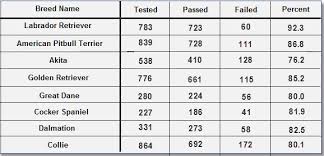Results of research by the National Canine Research Center
December 2, 2008, Coconino County, AZ: An elderly woman is killed by 2 dogs reported to be Labradors. The Sheriff's office issued a press release to all media. The story is reported in only one local newspaper.
 |
| A typical "feel-good" photo of a lab on Google Images |
I couldn't find the story.
December 19, 2008, Riverside County, CA: An elderly man is killed by 2 dogs reported to be pit bulls. The Sheriff's office issued a press release to all media. The story is reported in at least 285 media outlets, in 47 states, and in 8 foreign countries. CBS, ABC, MSNBC, USA Today, Forbes, and Fox News all carry the story.
 |
| A fairly typical portrayal of a pit bull |
I found the story easily. Provocative terms such as "brutal" and "vicious" were prominent.
As of April 10, 2013, an ordinance requiring mandatory sterilization of all pit bulls and pit bull mixes is on track to become law in Riverside County.
THIS IS NOT FAIR!
No scientific test of the temperament of different breeds has
ever found pit bulls to be inherently vicious. The American Temperament Test Society has a test simulating a casual walk through a park in which the dog encounters various challenging situations. The dog fails if it exhibits: unprovoked aggression, panic without recovery, or strong avoidance.
 |
| Pit Bulls did somewhat better than Golden Retrievers! |
Pit bulls came in near the average of dogs. They scored way better than Chihuahuas, Shiba Inus, and Dachshunds, but they're bigger than those dogs, they look formidable, and everyone already "knows" that they're dangerous.
The National Canine Research Council warns that breed identification is highly unreliable, and found that many attacks attributed to "pit bulls" were actually perpetrated by other breeds. Like the Humane Society and the ASPCA, the NCRC feels that breed-specific legislation such as that proposed for Riverside County is ineffective and counter-productive.
The ASPCA website states that:
"There is no evidence that breed-specific laws—which are costly and difficult to enforce—make communities safer for people or companion animals"
 |
| "I have a dream"--revisited |
I couldn't agree more.
http://www.nationalcanineresearchcouncil.com/uploaded_files/publications/2089407320_The%20Problem%20of%20Dog-Related%20Incidents%20and%20Encounters_NCRC.pdf
http://www.nbclosangeles.com/news/local/Riverside-County-Mandatory-Sterilization-Pit-Bulls-202131951.html
http://www.badrap.org/monster-myths
http://atts.org/breed-statistics/